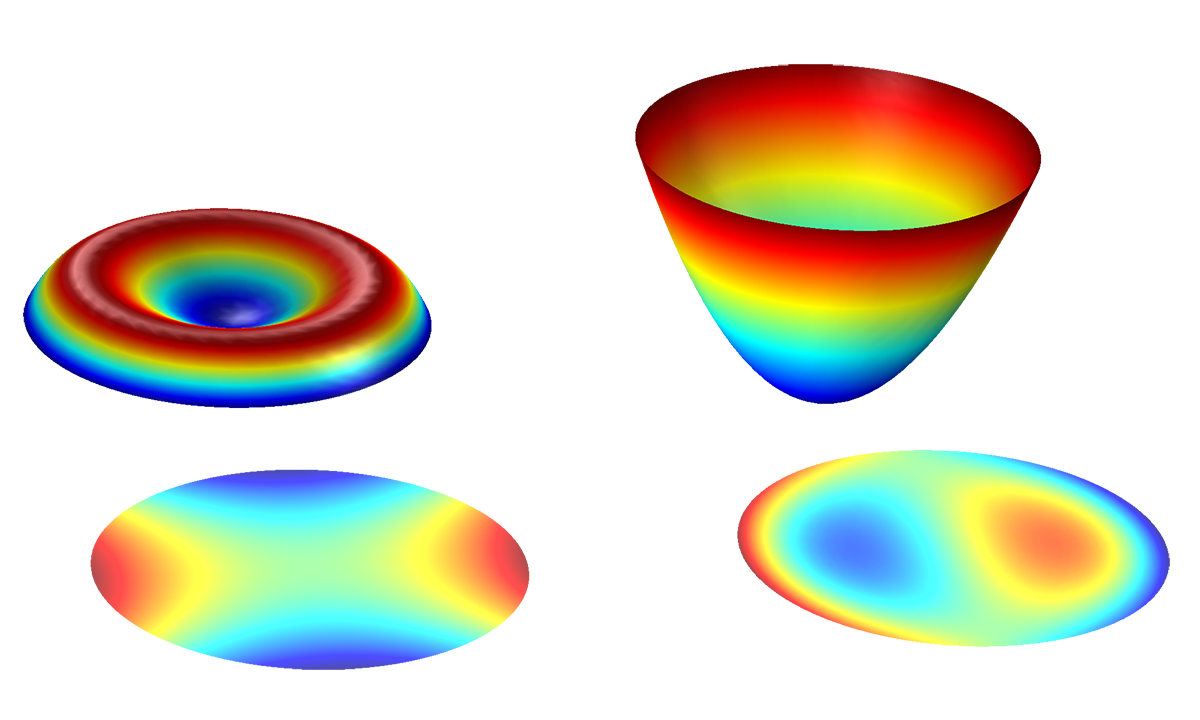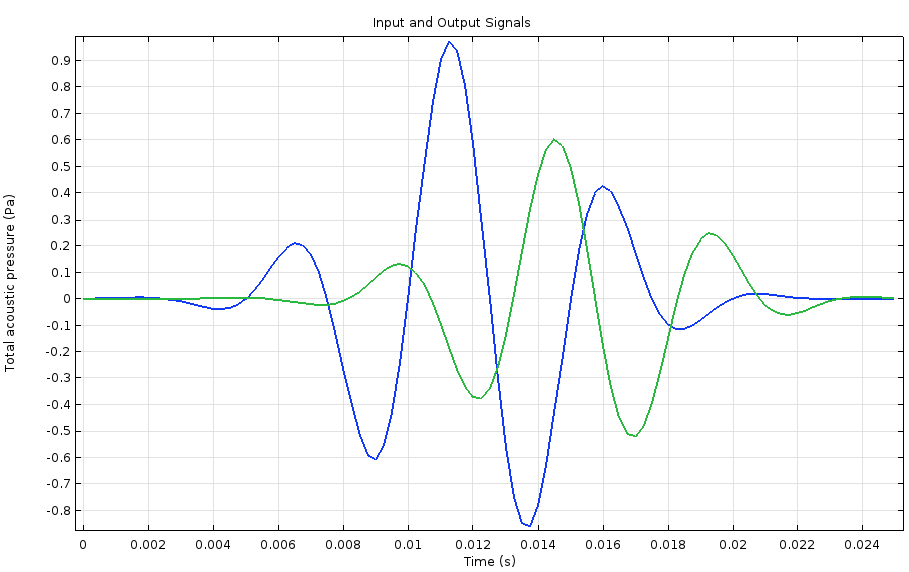
This gives a more “spiky” surface force compared to the smoother force obtained with the phase field method. The level set method computes the surface tension force from the curvature of the surface, which is obtained from the gradient of the level set function. The phase field method tends to give a slightly calmer behavior of the surface. There are also some differences in the streamlines after longer times, for example, in the recirculation zones at t = 1.0 s. There is a slight difference in the maximum velocity and in the height of the water surface, which may be explained by the fact that the two methods treat surface tension differently. The flow streamlines and the shape of the water surface are in decent agreement for both methods at the respective times. The results for the flow field and the shape of the water surface are shown below for the following times: 0.07 s, 0.57 s, and 1.0 s. Simulation Results for the Level Set and Phase Field Methods

Here are a few remarks about the model implementation in COMSOL Multiphysics: However, in the level set and phase field methods, the mesh is not moved with the liquid surface. Note that the moving mesh functionality is used to prescribe the movement of the little rectangular bar back and forth on the surface. Geometry and definition of the example problem. The dimensions of the channel and bar are small enough to keep the flow laminar. The bar is put into motion back and forth, tangential to the water surface, in order to generate a gentle wave on the water surface.
#MATLAB AND COMSOL 5.3 FREE#
The figures below show the example problem that we are going to use to investigate the level set and phase field methods for modeling free surfaces in COMSOL Multiphysics.Ī solid bar is half immersed in water in a small channel. This means that once we have found a proper value of χ for a certain set of operating conditions, we can use the relation above to set χ for a new set of conditions. For both the level set and the phase field methods, this looks like: The level set and phase field functions are both advected by the velocity vector computed by the Navier-Stokes equations. The droplet surface does not coincide with the surface of the elements, neither in the level set method nor in the phase field method. We can see in this plot that although the surface of the droplet is very sharp, the elements around the droplet do not adhere to the droplet’s surface.

The figure below shows the surface of two droplets in a channel, taken from the droplet breakup model in the Application Library of the add-on Microfluidics Module. The free liquid surface corresponds to the phase boundary between the liquid and the gas and is represented on a fixed mesh. The level set and phase field methods are both field-based methods in which a free fluid surface is represented as an isosurface of the level set or phase field functions. What Are the Level Set and Phase Field Methods? In part two, we will compare the results from this post with those obtained using the Moving Mesh interface for solving free surface problems.

In the first part of this blog series, we discuss the level set and phase field methods, which are field-based methods that describe almost any type of free liquid surface. There are four methods for modeling free liquid surfaces in the COMSOL Multiphysics® software: level set, phase field, moving mesh, and stationary free surface.


 0 kommentar(er)
0 kommentar(er)
